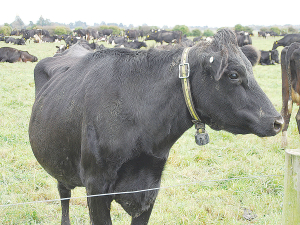Low-footprint feed drives high-profit, low-emissions dairy
The key to a dairy system that generates high profit with a low emissions intensity is using low footprint feed, says Fonterra program manager on-farm excellence, Louise Cook.
 Lincoln University Dairy Farm is expanding research to include variable milking frequency, moving the forage base to include plantain, and replacement rate reduction.
Lincoln University Dairy Farm is expanding research to include variable milking frequency, moving the forage base to include plantain, and replacement rate reduction.
Three new farming systems are being implemented to expand Lincoln University Dairy Farm’s (LUDF) focus and extend its outlook through to 2030.
The research is on variable milking frequency, moving the forage base to include plantain, and replacement rate reduction.
The South Island Dairying Demonstration Centre (SIDDC) has revised LUDF farm systems to more effectively contribute to New Zealand dairying and the wider primary sector.
Lincoln University deputy vicechancellor Professor Grant Edwards says SIDDC is committed to taking a leadership role in dairy farming in New Zealand through LUDF.
“It’s important that the partnership regularly reassesses and revisits the farm’s systems to consolidate its position at the vanguard of current and future scenarios.”
DairyNZ general manager for new systems and competitiveness, Dr David McCall, says New Zealand’s dairy sector is committed to remaining the most sustainable milk producers.
“As a SIDDC partner, we support LUDF implementing new farm systems. It is also exciting to see the adoption of variable milking frequencies, following DairyNZ’s three-year flexible milking project which highlighted the opportunities this system presents farmers.”
The variable milking programme will be implemented in the 2021/22 season and involves moving from the traditional twice-a-day milking to a more flexible milking regime with ten milkings over the course of a week.
SIDDC demonstration manager Jeremy Savage says there are many benefits to variable milking.
“A variable milking programme will not only improve cow welfare through less lameness, better overall health condition and enhanced vigour, but will also lift the safety and wellbeing of staff, with kinder rosters, fewer early starts and more condensed workloads allowing for better work/life balance,” he says.
Additionally, Savage says that starting in October 2021, LUDF will plant at least 10% of the farm into plantain each year.
“This is a forage that may significantly reduce nitrogen leaching. With cow intakes of 30% plantain or higher we anticipate LUDF will achieve further improvements to its nitrogen leaching results,” he says.
He says the potential benefits of reducing on-farm nitrogen leaching by up to 20% by managing cows’ diets are ‘obvious’ and ‘compelling’.
In introducing plantain, LUDF is applying research from the Forages for Reduced Nitrate Leaching (FRNL) project, a six-year cross-sector programme that looked at ways in which forages can reduce nitrate leaching.
Effective from 1 January 2026, there will be three new grower directors on the board of the Foundation for Arable Research (FAR).
The National Wild Goat Hunting Competition has removed 33,418 wild goats over the past three years.
New Zealand needs a new healthcare model to address rising rates of obesity in rural communities, with the current system leaving many patients unable to access effective treatment or long-term support, warn GPs.
Southland farmers are being urged to put safety first, following a spike in tip offs about risky handling of wind-damaged trees
Third-generation Ashburton dairy farmers TJ and Mark Stewart are no strangers to adapting and evolving.
When American retail giant Cosco came to audit Open Country Dairy’s new butter plant at the Waharoa site and give the green light to supply their American stores, they allowed themselves a week for the exercise.